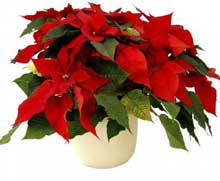 As I look back on 2016, it could be said my garden was in a holding pattern. There were times when it seemed to go a step ahead then two steps back, another step ahead then plateau. Freaky weather means freaky growing patterns. We can try and replicate the ideal conditions but nothing works better than the real thing. Evenly moist soil and moderate temperatures are, I’m afraid, just ideals.
As I look back on 2016, it could be said my garden was in a holding pattern. There were times when it seemed to go a step ahead then two steps back, another step ahead then plateau. Freaky weather means freaky growing patterns. We can try and replicate the ideal conditions but nothing works better than the real thing. Evenly moist soil and moderate temperatures are, I’m afraid, just ideals.
Before having a real chance to get over the notorious floods from the Fall of 2015 we had a fluky wet winter that went on forever this year. It was cool but never cold enough to kill off any bugs. Later we went weeks without any rain at my house and when it came it was in deluges. Just as things started to get back to normal Matthew hit and the roller coaster has started again. This may well be our new weather pattern so it is time to evaluate which plants were tough enough to deal with adversity and which weren’t. I always review my plants at the end of the year but this time I’ll be looking and evaluating more closely.
With a few exceptions – like Louisiana Iris, which love being drowned – most perennials resented the extreme conditions of drought to deluges. Their roots, which were desiccated from the drought, were not able to take up the excessive moisture we had at times. Keeping the soil evenly moist was difficult as we have mature trees and they are notoriously selfish with soil moisture during the periods of drought and the smaller plants suffered. Bulbs like spring flowering Daffodils were puny this year and when I dug some up to examine the condition of the roots, the bulbs themselves were spongy from the overly wet winter. Summer flowering bulbs like caladiums, no matter how much irrigation I put on them, just faded and waned by midseason. A second batch planted in early August filled in the area for the remaining weeks. I think I will plan on two plantings of caladiums next year. Over the years Salvias have been oblivious to weather variations but this year they did not rally as usual. My garden is old enough now that they may just be at the end of their lifespan. Most perennial plants need occasional rejuvenation by division but at some point it is time to replace them.
My Camellia japonicas have not started blooming yet but the C. sasanquas, which reached their peak later than usual this year, are still going strong. The weather conditions had no negative effect that I can see on them. I noticed my azaleas, which normally send up a few stray tall branches throughout the year, seemed to shoot up like crazy after Matthew. It must have been that burst of moisture; this is the wrong time of year to prune them as we’ll lose flower buds, but frankly they look a mess. I’ve been snipping here and there but it might be a bare spring in my garden.
I have had three pots of Carex ‘Everillo’ grass for almost 3 years, and I have to say this is an absolutely outstanding plant. In full sun they are a bright yellow green and hold the color throughout the year. Nothing, not weather, not insects or disease, ever bothers this plant. Look for it, everyone should grow this one.
My windowsills are filled with rooted cuttings of rex begonias. With a couple of exceptions, the ones I have planted in the garden don’t always make it through winter so I’ll have plenty of spares and some to share.
Be sure to make the rounds of your garden within the next few weeks and take plenty of photographs. Keep a record of your successes and those that were perhaps not so successful. I do this each year and make notes of any changes necessary. Having a record of what is blooming now makes me forget about the droughts and deluges and makes me thankful for living where I can see such glorious color this time of year.
If you are still looking for the perfect gift for the gardener in your life – or for yourself – your prayers are answered. One of the hottest stocking stuffers this year is the latest edition of the TheLowcountry Gardener. This is a “hot off the presses” 5th update of the famous booklet we have been using for years. My old copy is all dog-eared and starting to fall apart so this new version is just in time. The non-profit Beaufort Council of Garden Clubs publishes this 68 page gem and all monies raised go to community beautification projects. It is an amazing compilation of what you need to know about gardening in our unique and fragile ecosystem. There are things like lists of failsafe plants and environmentally friendly methods for growing everything from turf grass to vegetables, even water gardening. Newcomers to the area may have already noticed our gardening practices and the plants that thrive here are a bit different from other parts of the country. The Lowcountry Gardener is the advice that will make things easier for you. The booklet can be purchased for a mere $5 at the Visitors Center or at Rossignol’s on Bay Street.






